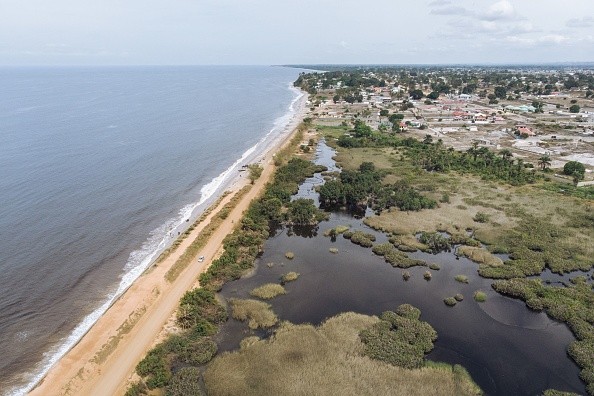Counties on the Atlantic coast has no practical methods for determining the effects of urban expansion on tidal flats, which been served as the guardians of beachside towns.
But using data spanning three decades, researchers devised a novel method for quantifying these consequences through a geographic lens focused on place and space.
The findings of an annual analysis of three highly urbanized coastal counties in the southern United States suggested that tidal flats in these three counties urgently require a sustainable management strategy in response to the fast development of metropolitan areas.
Importantly, this new approach may be refined and used in the whole United States, whereas the previous study has been confined to local cities.
Tidal flats to US coastal communities
 (Photo : ALEXIS HUGUET/AFP via Getty Images)
(Photo : ALEXIS HUGUET/AFP via Getty Images)

Because of growing human activity, tidal flats, which make up coastal wetlands, are experiencing unprecedented problems, as per ScienceDaily.
They are frequently regarded as indicators of coastal environmental change.
They are also the protectors of beachside towns, since they may greatly reduce the destructive effects of the water.
Coastal communities are more vulnerable without them.
There is currently no effective method for identifying and quantifying the interactions between urban areas and tidal flats, which is critical for preserving the nation's coastal settlements.
Furthermore, the present research is confined to particular cities and does not give a comprehensive picture.
The study's findings, published in the international journal Earth, confirmed and emphasized the tensions between increased human activity and coastal habitats.
Importantly, this innovative strategy is adaptable to the whole United States.
The findings revealed that tidal flats are under threat from both the eastern and western sides of urban growth.
The western side, in particular, has been quickly developed over the last three decades, providing Duval County with the greatest new urban areas within two kilometers of the ocean.
Duval County has undergone greater erosion and urban expansion than the other two counties, and it also has significantly smaller tidal flats.
It has the most recently developed land along the seashore.
Furthermore, several suburbs in the two other counties, especially the eastern and western wings of Charleston and the southwestern edge of Savannah, have been increasingly urbanized.
These urbanizations would also have a significant impact on the neighboring tidal flats, and the closest places would face more environmental challenges.
Also Read: Tides Don't Always Flush Water Out to Sea, Study Shows
A distinctive coastal form
Tidal flats arise on many low-energy beaches across the world when rivers bring in huge volumes of clay, silt, and fine sand particles.
These tidal flats, however, do not look the same everywhere.
There are two types of tidal flats: "closed" flats with plant growth and "open" flats with exposed sediments.
The world's largest tidal flat region spreads across extensive sections of the Dutch, German, and Danish shores of the North Sea and is an "open" tidal flat.
UNESCO has designated it a World Natural Heritage Site.
The intertidal zone here comprises typical mud composed of 30% clay, 30% fine silt, and more than 30% sand, as well as dead biomass.
However, due to the relatively high sand concentration in most sections, this area cannot officially be called a muddy coast. As a result, in the strictest sense, this tidal flat is considered a sandy shore.
However, the situation on the east coast of the United States is substantially different.
Salt marshes have evolved in a variety of areas between Florida and the Massachusetts peninsula of Cape Cod, defining them as "closed" tidal flats.
These arise at low-energy coastal portions when rivers import huge volumes of material that is primarily deposited in shallow regions near the shore.
Related article: Researchers Discover New Species of Spoon Worms in Japan
© 2024 NatureWorldNews.com All rights reserved. Do not reproduce without permission.





